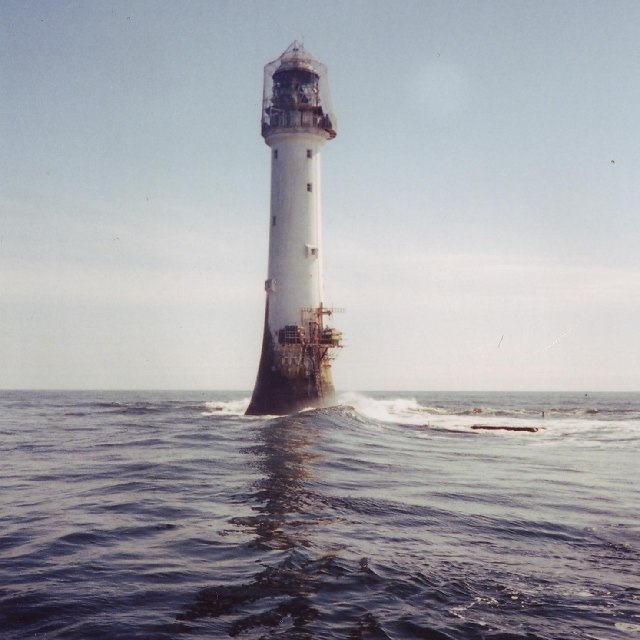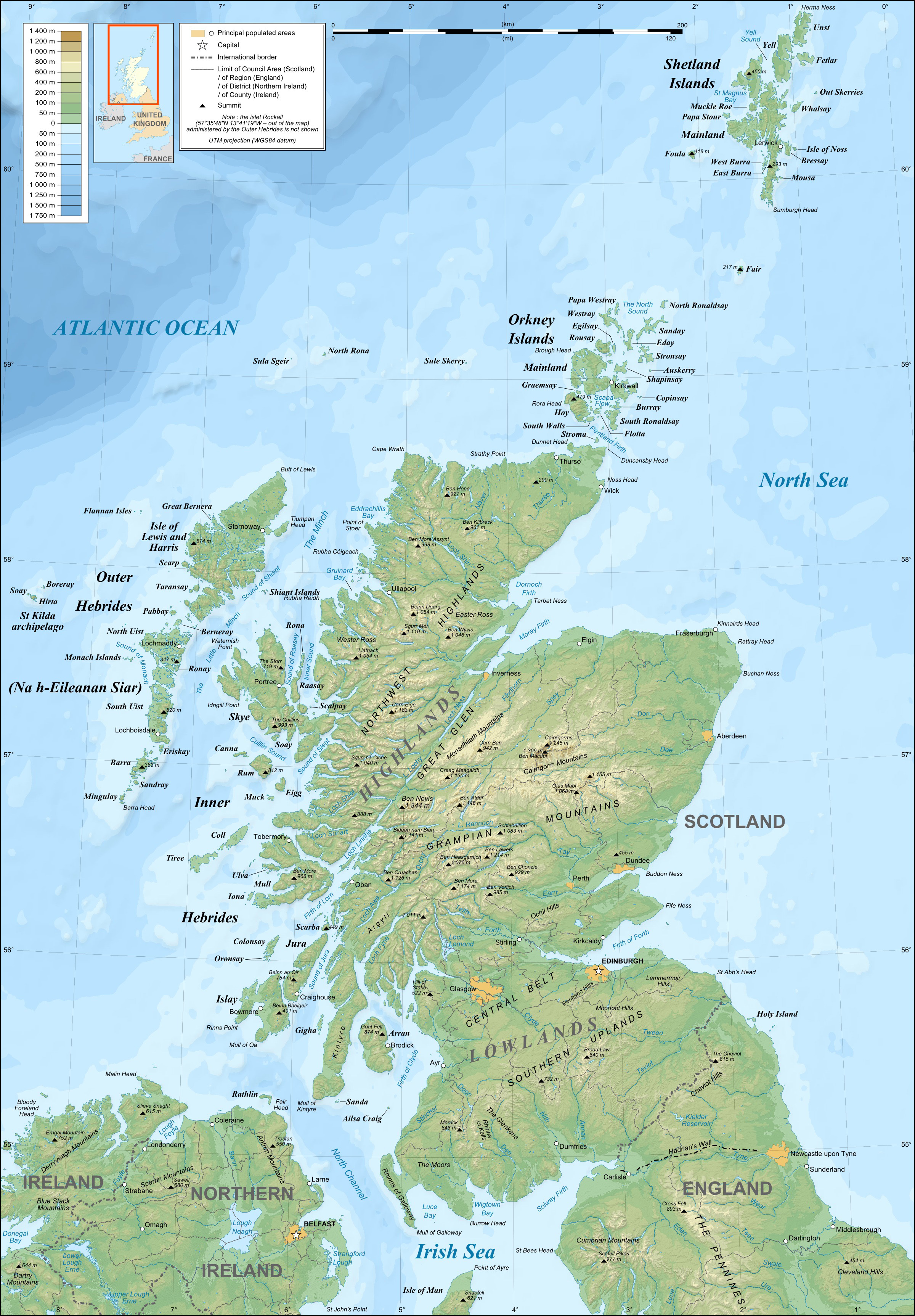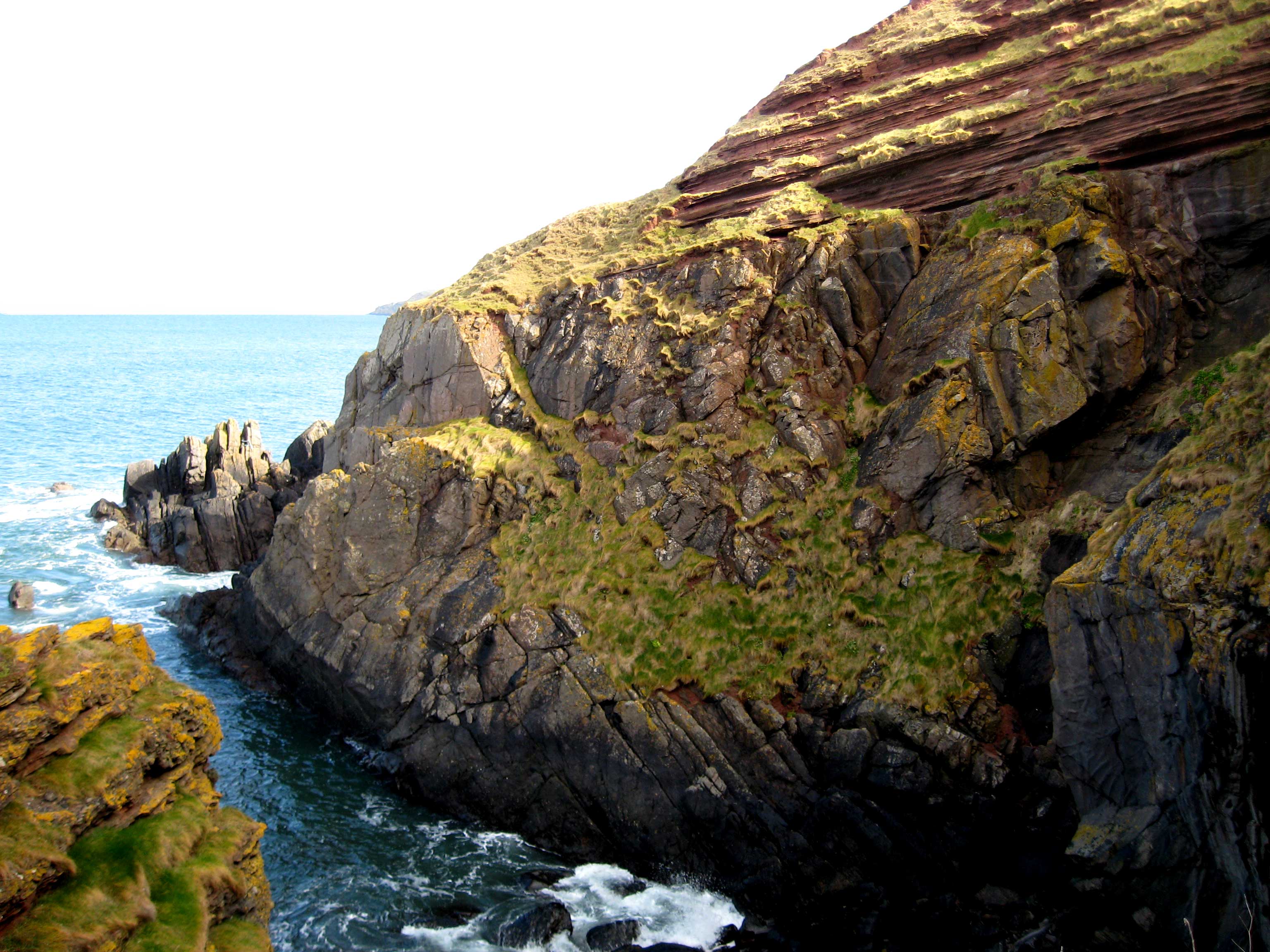|
Inchcape
Inchcape or the Bell Rock is a reef about off the east coast of Angus, Scotland, near Dundee and Fife, occupied by the Bell Rock Lighthouse. The name ''Inchcape'' comes from the Scottish Gaelic ''Innis Sgeap'', meaning "beehive isle", probably comparing the shape of the reef to old-style skep beehives. According to legend, the alternative name Bell Rock derives from a 14th-century attempt by the Abbot of Arbroath to install a warning bell on the reef; the bell was removed by a Dutch pirate who perished a year later on the rocks, a story that is immortalised in " The Inchcape Rock" (1802), a poem by Robert Southey. The main hazard the reef presents to shipping is that only a relatively small proportion of it is above water, but a large section of the surrounding area is extremely shallow and dangerous. HMS Argyll ran aground there in 1915. The rock was featured in a one-hour episode of the BBC's '' Seven Wonders of the Industrial World'', which told the story of the Bell Rock ... [...More Info...] [...Related Items...] OR: [Wikipedia] [Google] [Baidu] |
The Inchcape Rock
"The Inchcape Rock" is a ballad written by English poet Robert Southey. Published in 1802, it tells the story of a 14th-century attempt by the Abbot of Arbroath ("Aberbrothock") to install a warning bell on Inchcape, a notorious sandstone reef about off the east coast of Scotland. The poem tells how the bell was removed by a pirate, who subsequently perished on the reef while returning to Scotland in bad weather some time later. Like many of Southey's ballads "The Inchcape Rock" describes a supernatural event, but its basic theme is that those who do bad things will ultimately be punished accordingly and poetic justice done. Biographical background and publication Southey wrote the poem between 1796 and 1798 for ''The Morning Post'', but it was not published until 1802. His inspiration was the legend of a pirate who removed a bell on Inchcape placed there by the Abbot of Arbroath to warn mariners of the reef. The poem was reprinted in the ''Edinburgh Annual Register'' for 1810, ... [...More Info...] [...Related Items...] OR: [Wikipedia] [Google] [Baidu] |
Bell Rock Lighthouse
The Bell Rock Lighthouse, off the coast of Angus, Scotland, is the world's oldest surviving sea-washed lighthouse. It was built between 1807 and 1810 by Robert Stevenson (civil engineer), Robert Stevenson on the Bell Rock (also known as Inchcape) in the North Sea, east of the Firth of Tay. Standing tall, its light is visible from inland. The masonry work on which the lighthouse rests was constructed to such a high standard that it has not been replaced or adapted in 200 years. The lamps and reflectors were replaced in 1843; the original ones are now in the Cape Bonavista Light, lighthouse at Cape Bonavista, Newfoundland, where they are currently on display. The working of the lighthouse has been automated since 24 October 1988. The Northern Lighthouse Board, which has had its headquarters at 84 George Street in Edinburgh since 1832, remotely monitors the light. The lighthouse previously operated in tandem with a shore station, the Bell Rock Signal Tower, built in 1813 at th ... [...More Info...] [...Related Items...] OR: [Wikipedia] [Google] [Baidu] |
Seven Wonders Of The Industrial World
''Seven Wonders of the Industrial World'' is a 7-part British docudrama television miniseries that originally aired from to on BBC and was later released on DVD. The programme examines seven engineering feats that occurred since the Industrial Revolution. The same feats are covered in a companion book of the same name by producer Deborah Cadbury. Production The programmes were dramatised versions of actual events: actors played the various figures involved, reciting monologues and dialogue based on their letters and writings. It cost approximately £1 million to create the 7-part documentary. A book of the same name was released by producer Deborah Cadbury, exploring the same feats. Awards * 2004 British Academy Television Awards **Nominated: Huw Wheldon Award for Factual Series or Strand * 2004 British Academy Television Craft Awards **Nominated: Best Photography (Factual): Mike Spragg * RTS Television Awards 2004 **Nominated: Best Production Design (Entertainment & Non ... [...More Info...] [...Related Items...] OR: [Wikipedia] [Google] [Baidu] |
List Of Outlying Islands Of Scotland
The outlying islands of Scotland are not part of the larger archipelagos and island groups of Scotland—the Hebrides, the Northern Isles or the Islands of the Forth and Islands of the Clyde, Clyde estuaries. None of these islands are currently inhabited and few of them ever were, although Hirta was occupied from the Neolithic age until 1930 and Stroma, Scotland, Stroma was permanently occupied until the 1970s and thereafter by lighthouse keepers and their families until 1996. Several other outlying islands have lighthouses, none of which is still staffed. In this list, an island is defined as "land that is surrounded by seawater on a daily basis, but not necessarily at all stages of the tide, excluding human devices such as bridges and causeways". A complication relating to membership of this list is that there are various descriptions of the scope of the Hebrides, the large group of islands that lie off Scotland's west coast. The ''Collins Encyclopedia of Scotland'' describe ... [...More Info...] [...Related Items...] OR: [Wikipedia] [Google] [Baidu] |
Robert Southey
Robert Southey (; 12 August 1774 – 21 March 1843) was an English poet of the Romantic poetry, Romantic school, and Poet Laureate of the United Kingdom, Poet Laureate from 1813 until his death. Like the other Lake Poets, William Wordsworth and Samuel Taylor Coleridge, Southey began as a radical but became steadily more conservative as he gained respect for Britain and its institutions. Other romantics such as Lord Byron, Byron accused him of siding with the establishment for money and status. He is remembered especially for the poem "After Blenheim" and the original version of "Goldilocks and the Three Bears". Life Robert Southey was born in Wine Street, Bristol, to Robert Southey and Margaret Hill. He was educated at Westminster School, London (where he was expelled for writing an article in ''The Flagellant'', a magazine he originated,Margaret Drabble ed: ''The Oxford Companion to English Literature'' (6th edition, Oxford, 2000), about criticized the school's practice of ex ... [...More Info...] [...Related Items...] OR: [Wikipedia] [Google] [Baidu] |
Robert Stevenson (civil Engineer)
Robert Stevenson, Fellow of the Royal Society of Edinburgh, FRSE, Fellow of the Geological Society, FGS, Fellow of the Royal Astronomical Society, FRAS, FSA (Scot), FSA Scot, Member of the Wernerian Society, MWS (8 June 1772 – 12 July 1850) was a Scottish civil engineer, and designer and builder of lighthouses. His works include the Bell Rock Lighthouse. Early life Robert Stevenson was born in Glasgow. His father was Alan Stevenson, a partner in a West Indies sugar Joint-stock company, trading house in the city. Alan died of an epidemic fever on the island of Saint Kitts, St. Christopher in the West Indies on 26 May 1774, a few days before Robert's second birthday. Robert's uncle died of the same disease around the same time. Since this left Alan's widow, Jean Lillie Stevenson, in much-reduced financial circumstances, Robert was educated, as a young child, at a charity school. Robert's mother intended him to join the Ministry (government department), ministry, so when he w ... [...More Info...] [...Related Items...] OR: [Wikipedia] [Google] [Baidu] |
Abbot Of Arbroath
The Abbot of Arbroath or Abbot of Aberbrothok (and later Commendator) was the head of the Tironensians, Tironensian Benedictines, Benedictine monastic community of Arbroath Abbey, Angus, Scotland, founded under the patronage of King William I of Scotland, William of Scotland from Kelso Abbey and dedicated to Thomas Becket, St Thomas of Canterbury, Thomas Becket. The abbot, John Gedy, was granted the mitre on 26 June 1396. Arbroath Abbey became the wealthiest and most powerful abbey in later medieval Scotland. According to the poem "The Inchcape Rock" by Robert Southey, John Gedy, then Abbot of Aberbrothok, fixed a bell to the inchcape rock in the 1300s to warn mariners of the perilous rock. The following is a list of abbots and commendators. *Reginald, 1178–79 *Henry, 1179–1207 *Gilbert, 1208–19 x 1229 *Radulf de Lamley, 1225–39 *Adam, 1240–46 *Walter, 1247–58 x *Robert, 1261–67 *Sabinus, 1267 ? *John, 1268–70 *William (Abbot of Arbroath & Bishop of Dunblane), W ... [...More Info...] [...Related Items...] OR: [Wikipedia] [Google] [Baidu] |
Skerries Of Scotland
A skerry is a small rocky island, usually defined to be too small for habitation. Skerry, skerries, or The Skerries may also refer to: Geography Northern Ireland * Skerries, County Armagh, a townland in County Armagh * Skerry, County Antrim, a parish in County Antrim *The Skerries, Northern Ireland Republic of Ireland *Skerries, Dublin, a seaside town in Fingal, County Dublin ** Skerries railway station * Skerries, County Kildare, a townland in County Kildare Russia * Minina Skerries *The area surrounding Taymyr Island * Sumsky Skerries Scotland *Sule Skerry *Skerryvore *A number of locations in the Orkney Islands ** Auskerry ** Pentland Skerries *A number of locations in the Shetland Islands **Out Skerries **Gaut Skerries, in the Ramna Stacks **Ve Skerries South Georgia * Skrap Skerries United States * Skerry, New York Wales *The Skerries, Isle of Anglesey Australia * The Skerries (Victoria) Literature and music *Skerry, a fictional mammal in Neal Stephenson's nov ... [...More Info...] [...Related Items...] OR: [Wikipedia] [Google] [Baidu] |
Islands Of The North Sea
This is a list of the lists of islands in the world grouped by country, by continent, by body of water A body of water or waterbody is any significant accumulation of water on the surface of Earth or another planet. The term most often refers to oceans, seas, and lakes, but it includes smaller pools of water such as ponds, wetlands, or more rare ..., and by other classifications. For rank-order lists, see the other lists of islands below. Lists of islands by country or location Africa Antarctica Asia Europe North America Oceania South America Lists of islands by continent Lists of islands by body of water By ocean: By other bodies of water: List of ancient islands Other lists of islands External links Island Superlatives {{South America topic, List of islands of * ... [...More Info...] [...Related Items...] OR: [Wikipedia] [Google] [Baidu] |
Arbroath Abbey
Arbroath Abbey, in the Scottish town of Arbroath, was founded in 1178 by William I of Scotland, King William the Lion for a group of Tironensian Benedictine monks from Kelso Abbey. It was consecration, consecrated in 1197 with a dedication to the deceased Thomas Becket, Saint Thomas Becket, whom the king had met at the England, English court. It was William's only personal foundation — he was buried before the high altar of the church in 1214. The last Abbot was Cardinal (Catholicism), Cardinal David Beaton, who in 1522 succeeded his uncle James to become Archbishop of St Andrews. The Abbey is cared for by Historic Environment Scotland and is open to the public throughout the year (entrance charge). The distinctive red sandstone ruins stand at the top of the High Street in Arbroath. History King William gave the Abbey independence from its founding abbey, Kelso Abbey, and endowed it generously, including income from 24 parishes, land in every royal burgh and more. The Abbe ... [...More Info...] [...Related Items...] OR: [Wikipedia] [Google] [Baidu] |
Old Red Sandstone
Old Red Sandstone, abbreviated ORS, is an assemblage of rocks in the North Atlantic region largely of Devonian age. It extends in the east across Great Britain, Ireland and Norway, and in the west along the eastern seaboard of North America. It also extends northwards into Greenland and Svalbard. These areas were a part of the paleocontinent of Euramerica (Laurussia). In Britain it is a lithostratigraphic unit (a sequence of rock strata) to which stratigraphers accord supergroup status and which is of considerable importance to early paleontology. The presence of ''Old'' in the name is to distinguish the sequence from the younger New Red Sandstone which also occurs widely throughout Britain. Sedimentology The Old Red Sandstone describes a group of sedimentary rocks deposited in a variety of environments in the late Silurian, through the Devonian and into the earliest part of the Carboniferous. The body of rock, or facies, is dominated by terrigenous deposits and co ... [...More Info...] [...Related Items...] OR: [Wikipedia] [Google] [Baidu] |
Reef
A reef is a ridge or shoal of rock, coral, or similar relatively stable material lying beneath the surface of a natural body of water. Many reefs result from natural, abiotic component, abiotic (non-living) processes such as deposition (geology), deposition of sand or wave erosion planning down rock outcrops. However, reefs such as the coral reefs of tropical waters are formed by biotic component, biotic (living) processes, dominated by corals and coralline algae. Artificial reefs, such as shipwrecks and other man-made underwater structures, may occur intentionally or as the result of an accident. These are sometimes designed to increase the physical complexity of featureless sand bottoms to attract a more diverse range of organisms. They provide shelter to various aquatic animals which help prevent extinction. Another reason reefs are put in place is for aquaculture, and fish farmers who are looking to improve their businesses sometimes invest in them. Reefs are often quite n ... [...More Info...] [...Related Items...] OR: [Wikipedia] [Google] [Baidu] |








